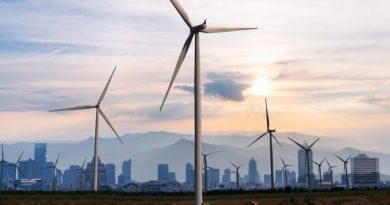Top 5: States Supplying Tap Water to 100% Households under Jal Jeevan Mission (JJM)

Tap water is a guarantee from the government of regular water supply decreasing a vicious cycle of burden from the women, clean drinking water for all family members, decreased disease burden and raised quality of life. This in the 21st century is inalienable for any government when the concern is rural population. The key turnaround in the tap water supply across the country is owed to the Jal Jeevan Mission (JJM) that the Modi Government undertook as a dream project involving massive investments in water supply infrastructural across the country. The JMM was launched by the Prime Minister on August 15, 2019 as an ambitious project.
Some of the states have already achieved 100% tap water supply to its households under the mission. Excluding the Union Territories, the top 5 performing states – Goa, Haryana, Punjab, Gujarat and Telangana – under the Jal Jeevan Mission portray a picture of resilience and governance. Notably most of the top performing states are ones that have been largely run by ‘double engine’ governments in the parlance of Prime Minister Narendra Modi.
Goa: The smallest state of India earned itself the unique distinction of becoming first ‘Har Ghar Jal’ State in the country in October 2020 as it successfully provided 100% Functional Household Tap Connections (FHTCs) in the rural areas covering 2.30 lakh rural households. The two districts of Goa, North Goa with 1.65 lakh rural households and South Goa with 98,000 rural households, stand fully saturated with assured piped water supply through tap connections. To strengthen the water testing facilities, the State has also got water quality testing laboratories NABL accredited. One key reason behind Goa’s success is that the Western Ghats state is also rich in fresh water resources as multiple rivers flow through it.
Telangana: Telangana became the first major state to have achieved cent per cent tap water connection to every rural household in March 2021. When the Jal Jeevan Mission was launched, Telangana had mere 29% households connected with water pipelines but the state made a key turnaround with the JMM and achieved 100% target in less than 2 years – a feat to reckon with. Much of the success of the state is also claimed to be attributed to Mission Bhagiratha programme that the state government announced in August, 2016 to provide piped drinking water supply to every household.
Haryana: This north Indian state too has achieved its target of supplying tap water to all its households in April 2022. The Jal Jeevan Mission started in Haryana in 2019 in the same year, 17.66 lakh connections were provided in the state out of the total need of 30.96 lakh. The Jal Shakti Ministry announced that all schools, anganwadis, health centres and the like were also connected with tap water connections.
Punjab: The western border state, having low underground water level, has achieved its Jal Jeevan Mission targets when it provided connections to its 34, 41,314 households recently. In its journey, Punjab had 1,634 habitations, which have been affected by arsenic, fluoride and other contaminations and the state government claimed to have provided potable water in all the quality-affected habitations through different means.
Gujarat: Gujarat was declared 100% Har Ghar Jal state in October 2022 with the total number of rural households with tap water connections standing at 91.73 lakh. Gujarat, which was known for water supply through road tankers and even trains, has made water scarcity a thing of the past. Over 26.57 lakh households have been provided with tap water connection since the launch of the Jal Jeevan Mission. Gujarat has a total of 80 water-testing laboratories of which 65 are NABL accredited.
The JMM is a mission on fast track that wants to deliver 100% tap water connections to every household of the country by 2024. Experts hold that Modi’s Jal Jeevan Mission is in sync with Mahatma Gandhi’s dream of Gram Swaraj. The speed and efficiency of the project is evident from the fact that on 15 August, 2019 when the JMM was launched, only 16% of Indian households in India had tap water connections. Today this figure has swelled to over 63%. If the target is breached by 2024, let there be no doubt that it would be counted as one of the most successful ‘gigantic scale’ projects accomplished anywhere in the world in record time.




